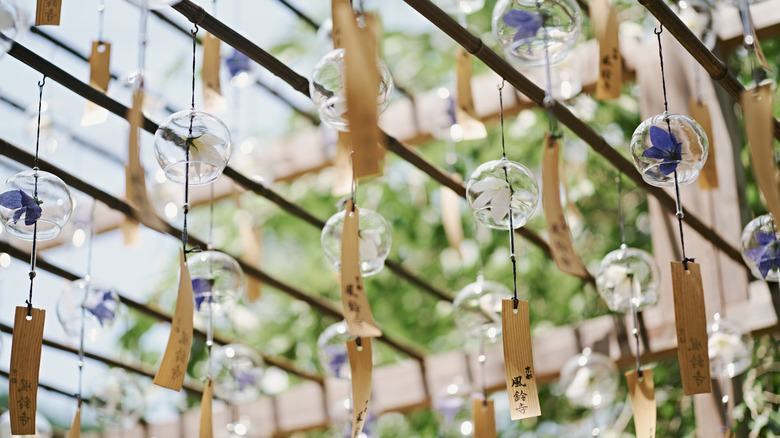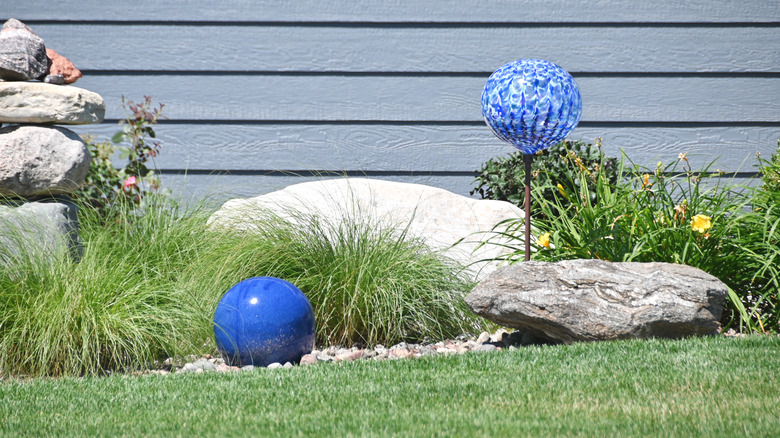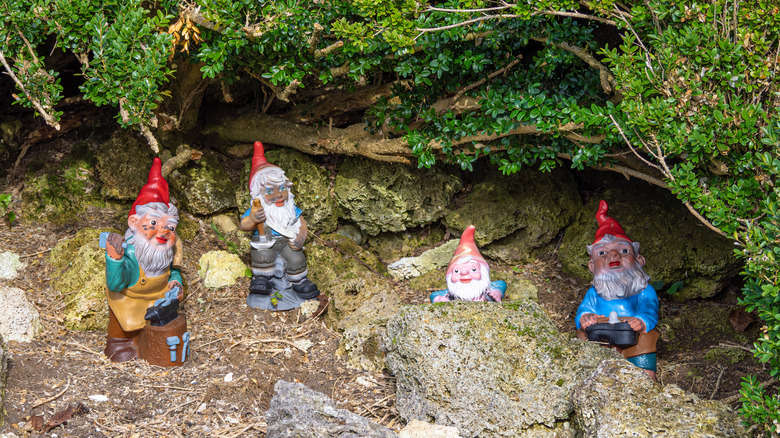The Hidden Meaning Behind These Outdoor Decorations
When you see a neighbor installing garden ornaments to enhance an outdoor space, you might admire the art and not give it much more thought. However, maybe you should. Your neighbor might be trying to send you a hidden message through things like wind chimes, geometric-shaped lawn ornaments, and garden gnomes. Many different lawn ornaments and decorations have a long history and subtle meanings that many of us might not be aware of at first glance.
Wind chimes are a very popular outdoor decoration, serving as a staple in gardens and accounting for a global market of $5.2 billion annually. Beyond the soothing sounds that may help you unwind when wind chimes are outside your window, they provide symbolism and hidden meanings. Some people believe in the spirituality of wind chimes, generating positive energy for those who hear them while eliminating negative energy. The positive energy they generate is said to promote relaxation and a release of tension for some.
Some people believe that the positioning of the wind chime provides an additional hidden meaning. Hanging the chimes on the southwest corner of a property or house might indicate the homeowner is feeling lucky in romance. Others believe placing chimes in the northwest corner promotes positivity by blocking negative energy. Homeowners who hang the chimes on the west side of the house or property seek good luck and enhanced creativity. When hung on the east side of the house, wind chimes promote strong family bonds. Many of the hidden meanings and symbolism related to wind chimes come from feng shui.
How different geometric shapes in decorations used outdoors portray hidden meanings
Using geometric shapes in garden landscaping and as outdoor decorations is popular because of the clean lines and modern sense of style they provide. But they can be used for more than aesthetic appeal. For example, seeing a five-point star shape on the outside of a home has provided an important symbolic meaning to many people for centuries. German settlers used them as a symbol of good luck and a way to ward off evil. Certain colors of barn stars generate an additional hidden meaning. A black star signifies protection, while a green star is a symbol of luck with crops on a farm.
People who select circle shapes in their outdoor decorations may be sending a message of creative energy. If someone has a Japanese-inspired garden or decor, using circles in the decorations symbolizes harmony and balance. Putting plants in a circular pattern or using orbs and spheres in your garden and outdoor decorations can portray a sense of tidiness.
Many people use arch shapes in outdoor and garden decorations to frame pathways and gates or to develop a focal point outdoors. The symbolism behind this shape is creating a spiritual connection with a higher plane because of the way the arch shape lifts the eye. In some cultures, people install arches as a way to signify a rebirth. Other cultures use arches to show that the homeowner is welcoming to guests. The placement of arches in outdoor decorations is important in giving a positive first impression.
Garden gnomes have many potential hidden meanings
Why do people put garden gnomes in their yards? Some people simply find garden gnomes to be fun and humorous. For others, though, the hidden meaning behind these whimsical, tiny statues is why they install them as outdoor decorations. Folklore related to gnomes discusses the magical powers and knowledge these little mythical creatures were believed to have about the natural order of the world, which frequently serves as the basis for the hidden meanings associated with them. They frequently symbolize good luck, fertility, and abundance. Some people believe they provide security for a home by keeping evil spirits at bay. One of the most popular meanings of displaying garden gnomes is showcasing that the property owner has a connection to nature or believes strongly in caring for the environment and the natural world.
At one point in history, having garden gnomes as outdoor decorations served as a status symbol to show that your family had significant wealth. As these little statues became mass-produced in the 1870s, though, more people could obtain them, leading to the emphasis on other hidden meanings for people who displayed them.


